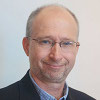 Although I expected to feel more informed about cure research after speaking with Steven G. Deeks, MD, for the December 2012 issue of POZ, I also felt unexpectedly hopeful after our chat.
Although I expected to feel more informed about cure research after speaking with Steven G. Deeks, MD, for the December 2012 issue of POZ, I also felt unexpectedly hopeful after our chat.
Here’s an excerpt from the Q&A explaining his disulfiram research:
The primary barrier to a cure is the fact that the genetic information for HIV gets integrated into long-lived CD4 cells, so they basically exist for years and years and become silent. To cure people, we need drugs that activate this resting HIV, forcing it out of its hiding place. This in theory should result in the death of the infected cell.
A few years ago, Bob Siliciano found that disulfiram--[better known as Antabuse, which is used to treat alcohol dependency]--reverses HIV latency in cell culture. Through mechanisms yet to be defined, the drug appears to activate HIV from resting cells. The level of drug exposure necessary to cause this effect is similar to that obtained when the drug is given to people with alcohol problems.
Since this drug has actually been around for almost 60 years and is clearly safe, at least in people who don’t drink, we designed a series of clinical trials to advance this idea into patients.
We first performed a pilot study to confirm its safety. We found in that study that the drug might increase HIV production. With funding from amfAR and now the NIH, we are about to launch a more definitive study to see if this drug actually might contribute to a cure.
Click here to read the full interview. Deeks is one of the most prominent cure researchers, but he’s far from the only one. Click here to see our 2012 POZ 100 list (which includes Deeks) honoring scientists and advocates accelerating the end of AIDS.








1 Comment
1 Comment